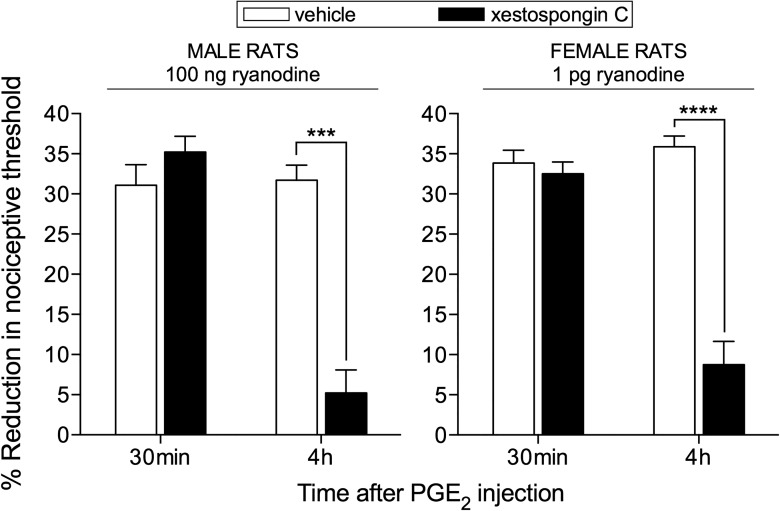Figure 1.
Ryanodine-induced priming is IP3 receptor dependent. The IP3 receptor antagonist xestospongin C (0.2 μg, black bars) was injected intradermally on the dorsum of the hindpaw of male (left) and female (right) rats; control groups (white bars) received vehicle. After 10 min, the doses of ryanodine previously shown to induce priming (100 ng in males and 1 pg in females) were injected at the same site. One week later, evaluation for the presence of priming was performed by intradermal injection of PGE2 (100 ng) at the same site as ryanodine. Two-way repeated-measures ANOVA, followed by Bonferroni post hoc test, showed a significant attenuation of the hyperalgesia induced by PGE2 at the fourth hour, in groups that had been pretreated with xestospongin C, compared with the control groups, pretreated with vehicle (males: F(1,5) = 130.6; ***p < 0.0001; females: F(1,5) = 89.10; ****p = 0.0002, when the hyperalgesia in the vehicle- and xestospongin C-treated groups is compared at the fourth hour), demonstrating that the induction of priming by ryanodine is dependent on the activation of IP3 receptors (N = 6 paws per group).

